
Hi Everybody!!
A few days ago, I was forced to go the the Garden Shop! (haha)- Anyway, we are just beginning to plant the cool weather flowers (in S Texas) as it just got cooler yesterday. Below I have shared some of the delights I spied through the camera eye, along with some info about these flowers from Wikipedia. I am out working in the cool flowerbeds-dancing with the weedeater once again. My deadline is January 1 so if I miss some days online here, I am just worn out! You will find as You get older, that You can not do what You once did!!!!!!!!! So Do It Now and Enjoy!
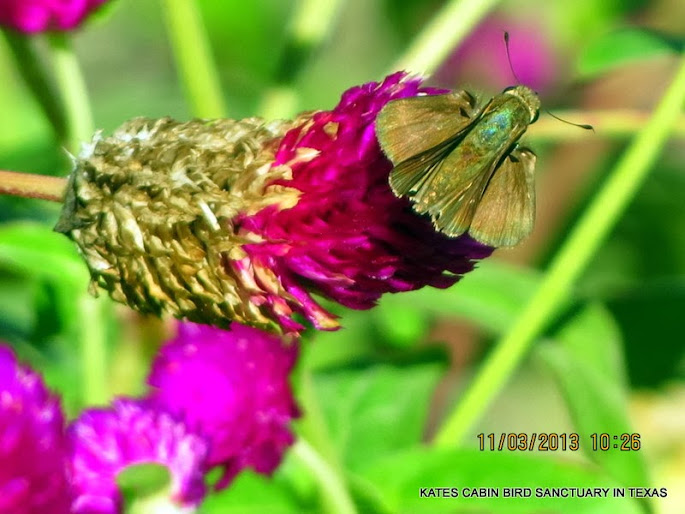


****Your photostudy is located in my G+ Web Album Galleries at the link below: Click to view!
https://plus.google.com/photos/117645114459863049265/albums/5942860667557690881

https://en.wikipedia.org/wiki/Plumbago
Plumbago
From Wikipedia, the free encyclopedia
| Plumbago | |
|---|---|
 | |
| Plumbago auriculata | |
| Scientific classification | |
| Kingdom: | Plantae |
| (unranked): | Angiosperms |
| (unranked): | Eudicots |
| (unranked): | Core eudicots |
| Order: | Caryophyllales |
| Family: | Plumbaginaceae |
| Subfamily: | Plumbaginoideae |
| Genus: | Plumbago L.[1] |
| Type species | |
| Plumbago europaea L. | |
Plumbago is a genus of 10-20 species of flowering plants in the family Plumbaginaceae, native to warm temperate to tropical regions of the world. Common names includeplumbago and leadwort (names which are also shared by the genus Ceratostigma). The generic name, derived from the Latin words plumbum ("lead") and agere ("to resemble"), was first used by Pliny the Elder (23-79) for a plant known as μολυβδαινα (molybdaina) toPedanius Dioscorides (ca. 40-90).[2][3] This may have referred to its lead-blue flower colour (OED), the ability of the sap to create lead-colored stains on skin,[4] or Pliny's belief that the plant was a cure for lead poisoning.[5]
The species include herbaceous plants andshrubs growing to 0.5–2 m (1.6–6.6 ft) tall. Theleaves are spirally arranged, simple, entire, 0.5–12 cm (0.20–4.7 in) long, with a tapered base and often with a hairy margin. The flowersare white, blue, purple, red, or pink, with a tubular corolla with five petal-like lobes; they are produced in racemes.
The flower calyx has glandular trichomes(hairs), which secrete a sticky mucilage that is capable of trapping and killing insects; it is unclear what the purpose of these trichomes is; protection from pollination by way of "crawlers" (ants and other insects that typically do not transfer pollen between individual plants), or possible protocarnivory.[6]
Mature plumbago leaves often have a whitish residue on their undersides, a feature that can confuse gardeners. While this white material resembles a powdery mildew disease or a chemical spray deposit, it is actually a natural exudate from “chalk” glands that are found on the plumbago species. [7]


White Plumbago
Blue Plumbago


https://en.wikipedia.org/wiki/Tecoma_stans
Tecoma stans
From Wikipedia, the free encyclopedia
| Tecoma stans | |
|---|---|
 | |
| Scientific classification | |
| Kingdom: | Plantae |
| (unranked): | Angiosperms |
| (unranked): | Eudicots |
| (unranked): | Asterids |
| Order: | Lamiales |
| Family: | Bignoniaceae |
| Genus: | Tecoma |
| Species: | T. stans |
Description[edit]
Yellow trumpetbush is an attractive plant that is cultivated as an ornamental. It has sharply-toothed, lance-shaped green leaves and bears large, showy, bright golden yellow trumpet-shaped flowers. It is drought-tolerant and grows well in warm climates. The flowers attract bees, butterflies, and hummingbirds.[2] The plant produces pods containing yellow seeds with papery wings. The plant is desirable fodder when it grows in fields grazed by livestock. Yellow Trumpetbush is a ruderal species, readily colonizing disturbed, rocky, sandy, and cleared land and occasionally becoming an invasive weed
The leaves and roots of the plant contain bioactive compounds, especially monoterpenes, which may have medicinal uses; Honey bees are attracted to it, but-unlike most flowering plants-the honey produced from Yellow Trumpetbush's nectar/pollen is poisonous.

Link to this album:
https://plus.google.com/photos/117645114459863049265/albums/5942246241263886737

Red Dragonfly
https://en.wikipedia.org/wiki/Dragonfly
Dragonfly
From Wikipedia, the free encyclopedia
A dragonfly is an insect belonging to the order Odonata, the suborder Epiprocta or, in the strict sense, the infraorder Anisoptera (from Greek ανισος anisos, "uneven" + πτεροςpteros, "wings", because the hindwing is broader than the forewing).[1] It is characterized by large multifaceted eyes, two pairs of strong transparent wings, and an elongated body. Dragonflies can sometimes be mistaken for damselflies, which are morphologicallysimilar; however, adults can be differentiated by the fact that the wings of most dragonflies are held away from, and perpendicular to, the body when at rest. Dragonflies possess six legs (like any other insect), but most of them cannot walk well. Dragonflies are among the fastest flying insects in the world.
Dragonflies are important predators that eat mosquitoes, and other small insects like flies,bees, ants, wasps, and very rarely butterflies. They are usually found around marshes, lakes, ponds, streams, and wetlands because their larvae, known as "nymphs", are aquatic. Some 5680 different species of dragonflies (Odonata) are known in the world today.[2]
Though dragonflies are predators, they themselves are subject to predation by birds, lizards, frogs, spiders, fish, water bugs, and even other large dragonflies.
| Dragonfly | |
|---|---|
 | |
| Yellow-winged Darter | |
| Scientific classification | |
| Kingdom: | Animalia |
| Phylum: | Arthropoda |
| Class: | Insecta |
| Order: | Odonata |
| (unranked): | Epiprocta |
| Suborder: | Anisoptera Selys, 1854 |
Life cycle[edit]
Female dragonflies lay eggs in or near water, often on floating or emergent plants. When laying eggs, some species will submerge themselves completely in order to lay their eggs on a good surface. The eggs then hatch into naiads. Most of a dragonfly's life is spent in the naiad form, beneath the water's surface, using extendable jaws to catch other invertebrates (often mosquito larvae) or even vertebrates such as tadpoles and fish.[3] They breathe through gills in their rectum, and can rapidly propel themselves by suddenly expelling water through the anus.[4] Some naiads even hunt on land,[5] an aptitude that could easily have been more common in ancient times when terrestrial predators were clumsier.
The larval stage of large dragonflies may last as long as five years. In smaller species, this stage may last between two months and three years. When the naiad is ready to metamorphose into an adult, it climbs up a reed or other emergent plant. Exposure to air causes the naiad to begin breathing. The skin splits at a weak spot behind the head and the adult dragonfly crawls out of its larval skin, pumps up its wings, and flies off to feed on midges and flies. In flight the adult dragonfly can propel itself in six directions; upward, downward, forward, back, and side to side.[6] The adult stage of larger species of dragonfly can last as long as five or six months.
Flight speed[edit]
Tillyard claimed to have recorded the Southern Giant Darner flying at nearly 60 miles per hour (97 km/h) in a rough field measurement.[7] However, the greatest reliable flight speed records are for other types of insects.[8] In general, large dragonflies like the hawkers have a maximum speed of 10–15 metres per second (22–34 mph) with average cruising speed of about 4.5 metres per second (10 mph).[9]
Dragonflies and damselflies[edit]
Damselflies (suborder Zygoptera), typically smaller than dragonflies, are sometimes confused with newly moulted dragonflies. However, once a dragonfly moults, it is already fully grown. There are other distinctions that set them apart: most damselflies hold their wings at rest together above the torso or held slightly open above (such as in the family Lestidae), whereas most dragonflies at rest hold their wings perpendicular to their body, horizontally or occasionally slightly down and forward. Also, the back wing of the dragonfly broadens near the base, caudal to the connecting point at the body, while the back wing of the damselfly is similar to the front wing. The eyes on a damselfly are apart; in most dragonflies the eyes touch. Notable exceptions are the Petaluridae (Petaltails) and the Gomphidae (Clubtails).
The largest living odonate by wingspan is a damselfly from South America, Megaloprepus caerulatus (Drury, 1782) while the second largest are females of the dragonfly Tetracanthagyna plagiata (Wilson, 2009). The female T. plagiata is probably the heaviest living odonate.[10]
G+ Photofriends below have these most beautiful red dragonflies posted at links below:
https://plus.google.com/+BalramPanikkaserry/posts/BRbrhBNUcnq
https://plus.google.com/109070554646830123858/posts/73iapB8vjoz
Flower Finish!
...this is brendasue signing off from Rainbow Creek. See You next time! Plant Flowers for YOU!!!!!
O+O

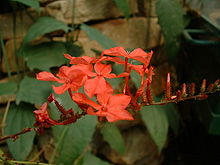
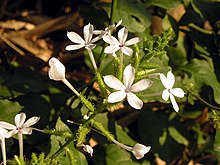







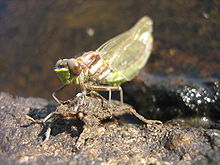

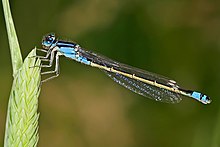









No comments:
Post a Comment
Hi Everybody! Please say hello and follow so I know you are here! Due to the inconsideration of people trying to put commercials on my blog comment area, I have restricted use of anonymous posts. Sorry that some hurt all.
My public email is katescabin@gmail.com No spammers or trolls